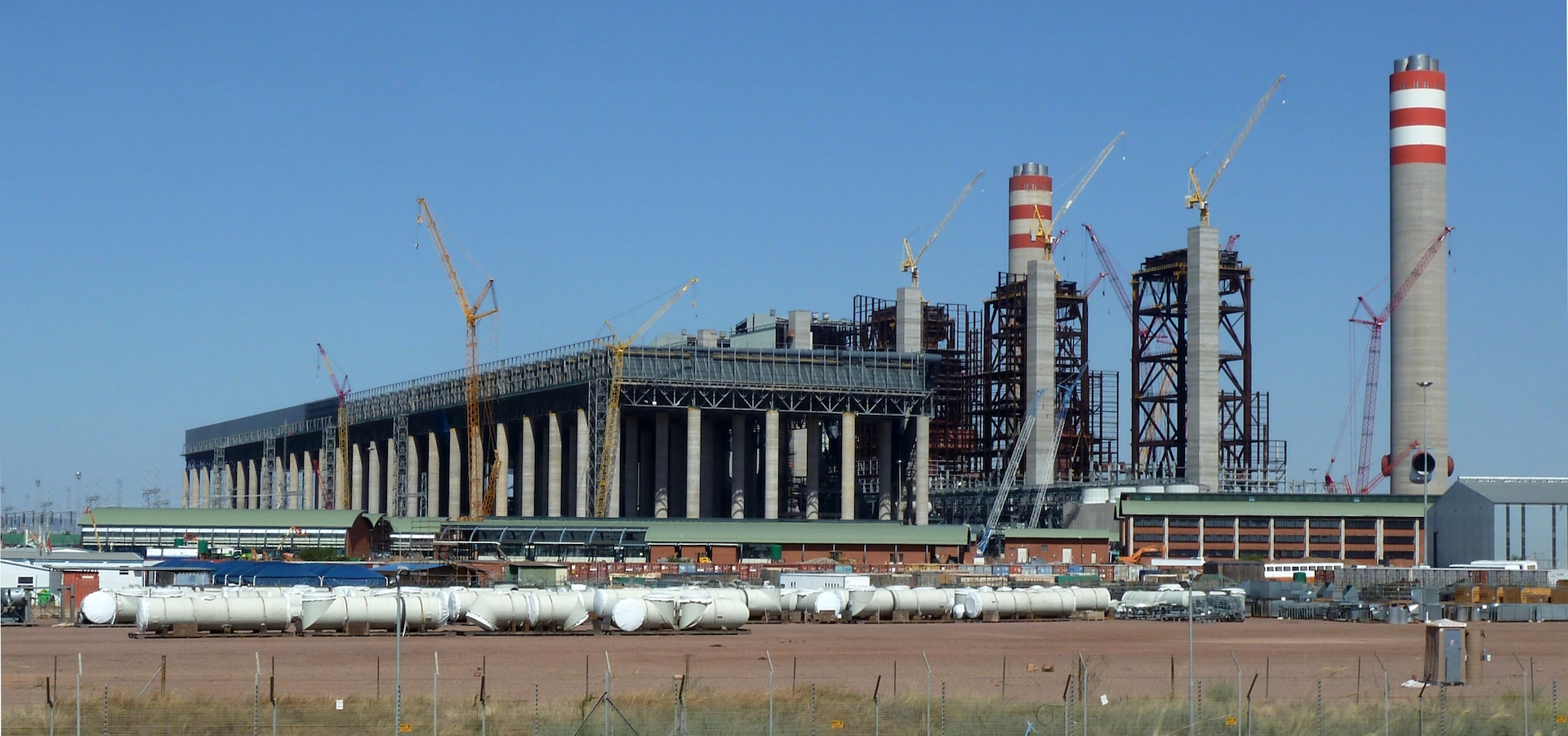Civil society has used many forms of activism to push for a transition to a greener electrical grid in South Africa. This year, they’ve taken their battle to the courts, winning two significant rulings. Leonie Joubert takes a look at the case to stop a new coal-fired mega-station north of Johannesburg.

Coal in South Africa: could legal action stop construction on another mega-station? (Photo by JMK, edited, CC BY-SA 3.0)
When the Minister of Environmental Affairs approved the environmental application for a proposed new coal-fired power station about four hours’ drive north of Johannesburg, it was not good enough that she did so on the basis that the environmental impact assessment (EIA) merely listed the size of the power plant’s projected carbon emissions, the regional High Court ruled in March 2017. The minister should also have taken into consideration the likely impacts of the climatic changes that would result from this power plant’s considerable greenhouse gas emissions, before giving her departmental go-ahead. By approving the EIA, the Department of Energy (DoE) would then have been able give the final approval of the Thabametsi power plant, which was shortlisted as part of a new state initiative to commission a series of privately built, owned, and run coal power stations.
According to the Centre for Environmental Rights (CER), which supported the plaintiff Earthlife Africa (ELA) in the court bid, the Thabametsi Power Company’s new plant would be one of the largest carbon emitting power stations of its kind globally, not just in South Africa, and would have been as carbon-intensive as the state utility’s current old-technology power plants.
The court overturned the environment minister’s approval, thereby stalling the development of this particular plant. But the wider implications are that all similar new coal power stations that come before the DEA for environmental clearance will need to also show a clear analysis of their anticipated climate change impacts, and how they will offset those.
According to the CER, all similar EIA processes will need to quantify the possible climate change implications, such as the impact on health or water in the vicinity of the plant. It will also have to show whether the viability of the plant will be compromised by climate change – for instance, could water shortages owning to localised extreme drought, worsened by climate change, threaten the plant’s operations?
Ultimately, the EIA must show that it has considered what ‘measures are required to reduce (the plant’s) emissions, and ensure the resilience of the project and the surrounding environment to those impacts’, according to the CER.
The approval of the plant is currently on hold, pending final decisions on various possible courses of action available to both the Departments of Environmental Affairs, and Energy. The deadline for commercial and financial sign-off of the plant is 3 November 2017 and Earthlife Africa is waiting to hear whether the energy department will extend this deadline to accommodate the various delays.
This is the second time this year that civil society has had to turn to the courts to stall a large and risky mega-infrastructure development that had provisionally been approved by the state. In April this year, the High Court in Cape Town overturned the South African government’s agreement to buy nuclear energy generation technology from the Russian government, because the court found that the state had not followed its own procedures around accountability, transparency, and public participation.
Both of these cases show that using legal technicalities and questions of due process to throw a roadblock in the way of the South African government’s approval of new coal or nuclear power stations, is a viable process, even if it is slow and costly. It requires a team of skilled legal practitioners in order to be effective, and considerable funding. But the cases also indicate how potent the courts still are as a mechanism for accountability and transparency in the state approval of big and carbon-intensive infrastructure projects that have implications for how the taxpayers’ money is spent, and how clean and appropriate the technology is that drives the country’s energy economy.
The DoE’s nuclear ambitions would have committed South Africans to paying off a suite of up to six nuclear power stations, capable of generating 9.6 gigawatts (GW) of power, at a cost which the Treasury argued was potentially crippling to the economy.
The Thabametsi power station would have generated the equivalent of nearly 10 million tons of carbon dioxide equivalent (CO2e) per year across its 30 years lifespan. Its greenhouse gas emission intensity of 1.23 tons of CO2e per megawatt hour, would be ‘roughly equivalent, if not slightly worse, than (the country’s) oldest coal-fired power plants’, says the CER.
Neither project is definitively stopped, but at least they have been delayed. In the mean time, political ambitions are shifting, and the cost of renewable power continues to fall, making these coal and nuclear plants increasingly less economically and politically viable.
Howdy!
The war on coal is over. For a once-off settlement of $ 420,000.- Arizona surrenders:
http://www.pennenergy.com/articles/pennenergy/2017/10/coal-power-navajo-hopi-tribes-get-funding-to-ease-coal-plant-shutdown.html
In Poland and Germany this money would buy 3 jobs.
Nope, we are just geting started